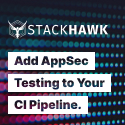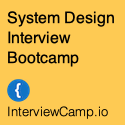Sponsored Post: New Relic, NetDNA, Torbit, GigaSpaces, AiCache, Logic Monitor, AppDynamics, CloudSigma, ManageEngine, Site24x7
 Tuesday, July 10, 2012 at 9:15AM
Tuesday, July 10, 2012 at 9:15AM 
Who's Hiring?
- Torbit is hiring! Care about performance? Care about making the internet faster and better? At Torbit we use lots of Golang, Node.js, JavaScript and PHP to solve big challenges.
Fun and Informative Events
- Your event could be here.
Cool Products and Services
- New benchmarking report proves GigaSpaces XAP as 57 times faster than VMWare GemFire. See complete comparison here. Cloudify blog. GigaSpaces blog.
- New Relic - real user monitoring optimize for humans, not bots. Live application stats, SQL/NoSQL performance, web transactions, proactive notifications. Take 2 minutes to sign up for a free trial.
- NetDNA, a Tier-1 GlobalContent Delivery Network, offers a Dual-CDN strategy which allows companies to utilize a redundant infrastructure while leveraging the advantages of multiple CDNs to reduce costs.
- aiCache creates a better user experience by increasing the speed scale and stability of your web-site. Test aiCache acceleration for free. No sign-up required. http://aicache.com/deploy
- LogicMonitor - Hosted monitoring of your entire technology stack. Dashboards, trending graphs, alerting. Try it free and be up and running in just 15 minutes.
- AppDynamics is the very first free product designed for troubleshooting Java performance while getting full visibility in production environments. Visit http://www.appdynamics.com/free.
- CloudSigma. Utility style high performance cloud servers in the US and Europe delivered on all 10GigE networking. Run any OS, take advantage of SSD storage and tailored infrastructure options.
- ManageEngine Applications Manager : Monitor physical, virtual and Cloud Applications.
- www.site24x7.com : Monitor End User Experience from a global monitoring network.
For a longer description of each sponsor, please read more below...



















